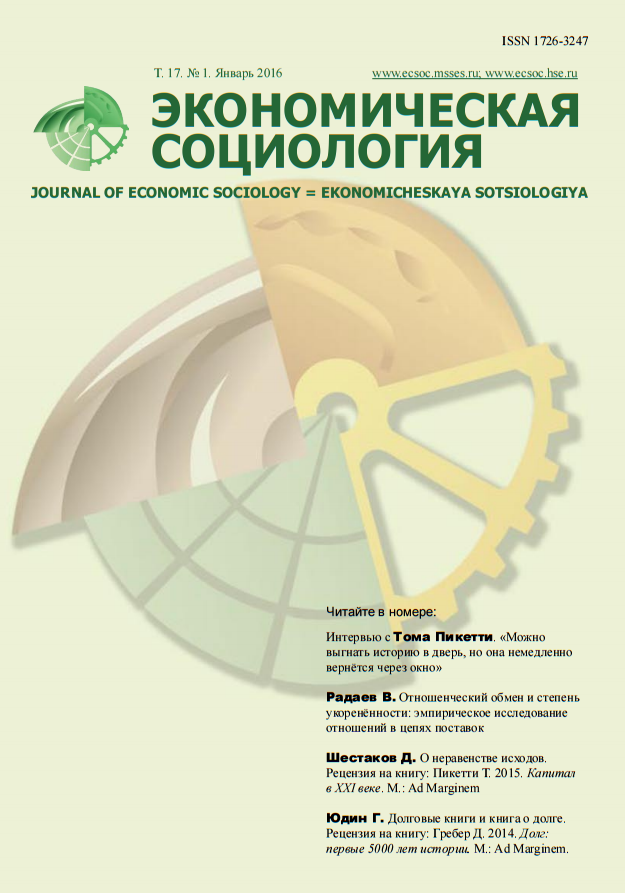Stray Thoughts on How It Might Go
Abstract
The idea of the book, In 100 Years: Leading Economists Predict the Future, edited by Ignacio Palacios-Huerta (MIT Press, 2013), is to demonstrate the predicting powers of economics. Relying on practical experience, theoretical knowledge about mechanics of the economy, and professional intuition, distinguished economists make their century-ahead forecast. The book contains ten essays, including ones written by Nobel Memorial Prize Laureates Angus Deaton (2015), Robert J. Shiller (2013), Alvin E. Roth (2012), and Robert M. Solow (1987). Prominent social scientists try to predict what kind of future awaits labor, inequality, world economy lineup, technology, etc.
The Journal of Economic Sociology publishes the Russian translation of the essay “Stray Thoughts on How It Might Go” by Robert M. Solow. The author sounds modestly pessimistic, expecting the coming decades to be far more troubling and difficult than the twentieth century. The main sources of uncertainty and future changes are the evolution of decisions about work and leisure, relative growth of developed countries and emerging economies, the impact of climate change on economic growth, changes in proportion in which income is divided between labor income and capital, and the overall political environment.













